Birds
Media

Species Types
Scientific Name
Nyctanassa violacea
Description
Adult yellow-crowned night-herons have black heads with creamy white cheek patches and crown. Night-herons are named for their habit of foraging mostly in the evening.
Media
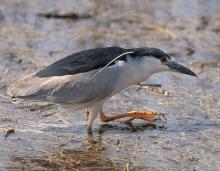
Species Types
Scientific Name
Nycticorax nycticorax
Description
Stocky and short-legged compared to other herons, the black-crowned night-heron has a black crown and back, gray wings, and whitish-gray underparts and head.
Media
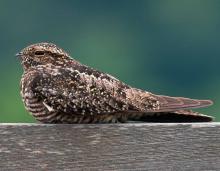
Species Types
Scientific Name
Chordeiles minor
Description
At night, common nighthawks fly, with quick flaps, glides, and darting movements, around lights pursuing flying insects. They are brown with a white mark on the underside of each narrow wing.
Media
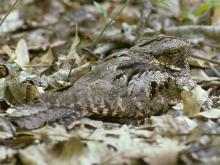
Species Types
Scientific Name
Antrostomus vociferus (formerly Caprimulgus vociferus)
Description
Although many people hear the evening calls of whip-poor-wills, few ever see these birds because by day they crouch on the ground amid fallen leaves, where they are perfectly camouflaged.
Media

Species Types
Scientific Name
Bombycilla cedrorum
Description
Sleek, crested cedar waxwings gather in large, relatively quiet groups to eat berries from shrubs and trees. The voice is a high-pitched, whizzy trill.
Media
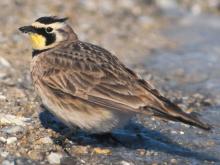
Species Types
Scientific Name
Eremophila alpestris
Description
Horned larks are common in open, plowed crop fields anywhere in Missouri. Their movement against the ground, and their distinctively marked faces and “horns,” can help you see their flocks.
Media

Species Types
Scientific Name
Tringa melanoleuca
Description
One of the more common of about 35 shorebirds that migrate through Missouri, the greater yellowlegs is large, with a slightly upturned bill and long, bright yellow legs.
Media

Species Types
Scientific Name
Buteo platypterus
Description
The broad-winged hawk is stocky, with a large head and short tail. They are often seen migrating in large flocks. From below, note the pointed wingtips and broad black trailing edge to the pale wings.
Media
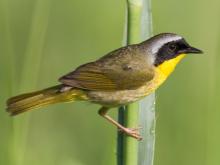
Species Types
Scientific Name
Geothlypis trichas
Description
The male common yellowthroat wears a black mask that contrasts strongly against the bright yellow underparts. The female is olive brown. A common summer resident in Missouri’s marshes and other wet areas.
Media

Species Types
Scientific Name
Helmitheros vermivorum
Description
The worm-eating warbler is dull olive tan but is crisply marked with a black eyeline and a black line on each side of the buffy crown. It lives in large, wooded tracts, especially on dry, brushy slopes.
See Also







Media

Species Types
Scientific Name
Hemaris diffinis
Description
The snowberry clearwing is a moth that confuses people because it looks like a bumblebee and flies like a hummingbird!
Media

Species Types
Scientific Name
Hyles lineata
Description
The white-lined sphinx moth sometimes confuses people because it flies, hovers, and eats from flowers like a hummingbird. The adults often fly during daylight hours as well as in the night and are often found at lights.
Media

Species Types
Scientific Name
Darapsa myron
Description
The Virginia creeper sphinx moth is common in woods and brushy areas and comes to lights at night. The larvae eat Virginia creeper and grape leaves.
Media

Species Types
Scientific Name
Perimyotis subflavus (formerly Pipistrellus subflavus)
Description
Tri-colored bats, formerly called eastern pipistrelles, are relatively small and look pale yellowish or pale reddish brown. The main hairs are dark gray at the base, broadly banded with yellowish brown, and tipped with dark brown.
Media

Species Types
Scientific Name
Myotis grisescens
Description
Gray myotises are difficult to distinguish from other mouse-eared bats. A key identifying feature of the gray myotis is that its wing is attached to the ankle and not at the base of the toes. It’s an endangered species.
Media

Species Types
Scientific Name
Myotis lucifugus
Description
The little brown myotis (little brown bat) is one of our most common bats, but populations are declining. White-nose syndrome has taken a heavy toll in northeastern states. This species is now listed as vulnerable across its range.
Media

Species Types
Scientific Name
Myotis sodalis
Description
The Indiana myotis, or Indiana bat, summers along streams and rivers in north Missouri, raising its young under the bark of certain trees. It is an endangered species.
About Birds in Missouri
About 350 species of birds are likely to be seen in Missouri, though nearly 400 have been recorded within our borders. Most people know a bird when they see one — it has feathers, wings, and a bill. Birds are warm-blooded, and most species can fly. Many migrate hundreds or thousands of miles. Birds lay hard-shelled eggs (often in a nest), and the parents care for the young. Many communicate with songs and calls.





















